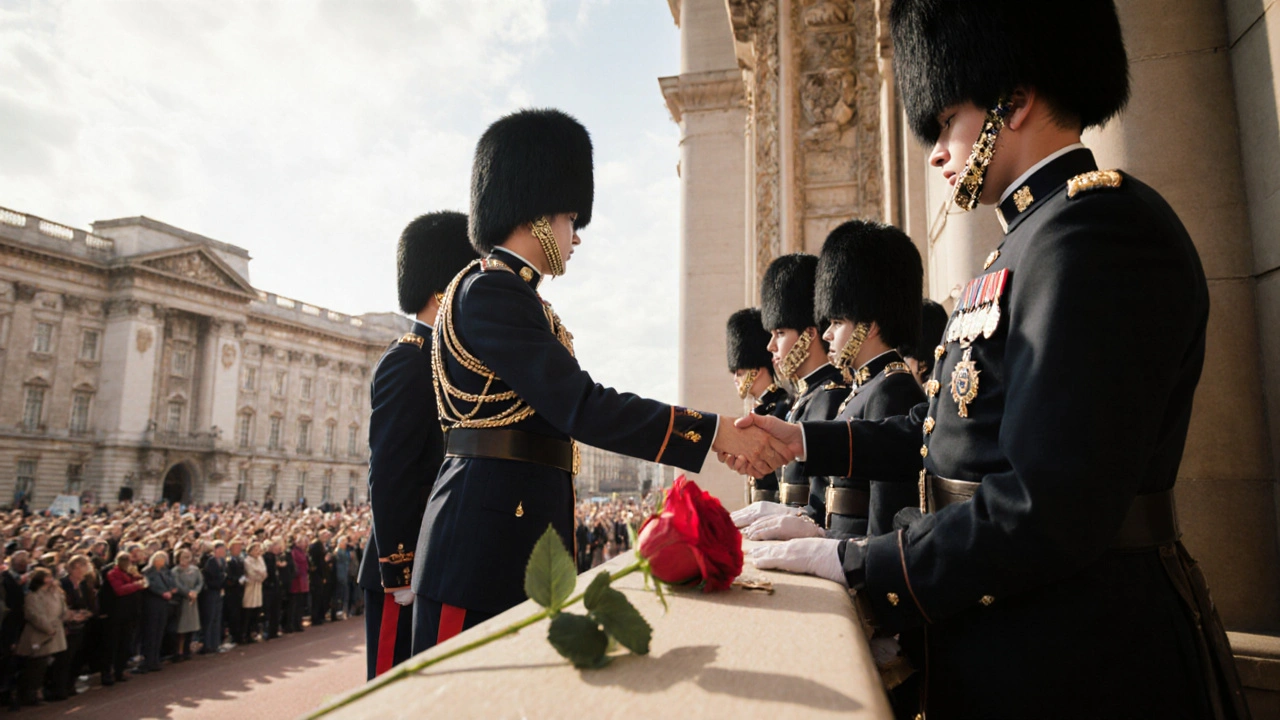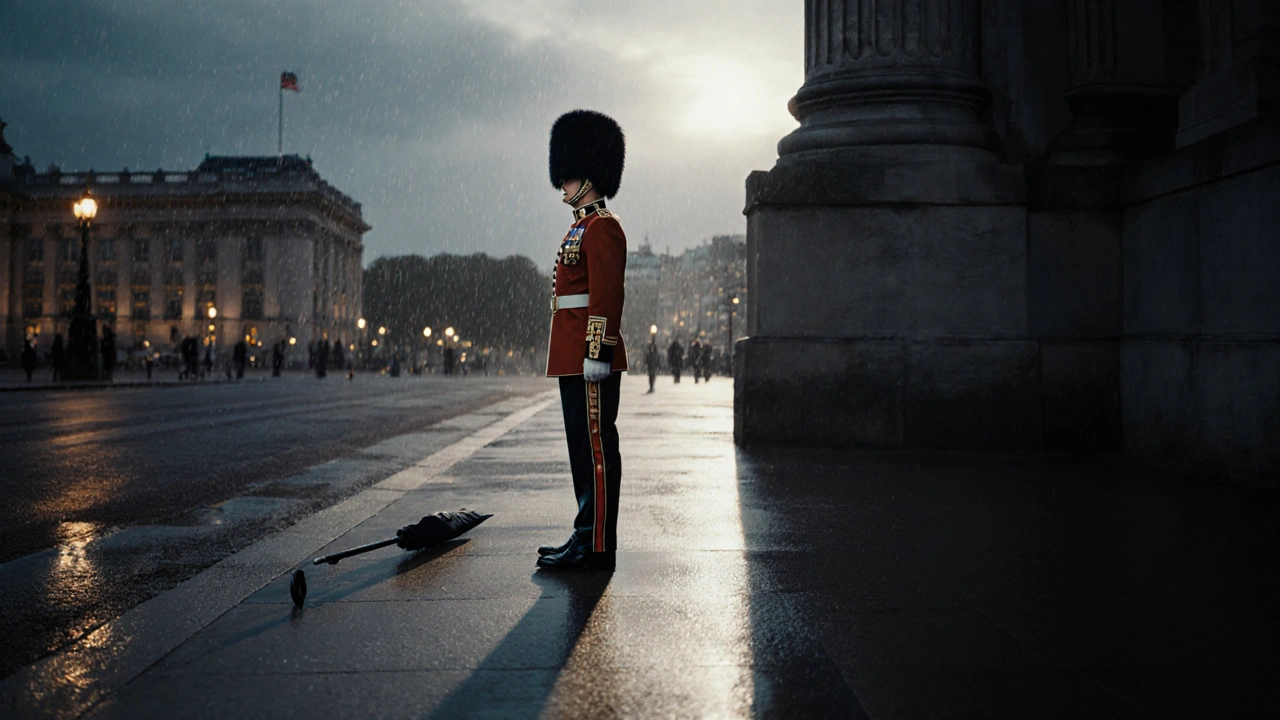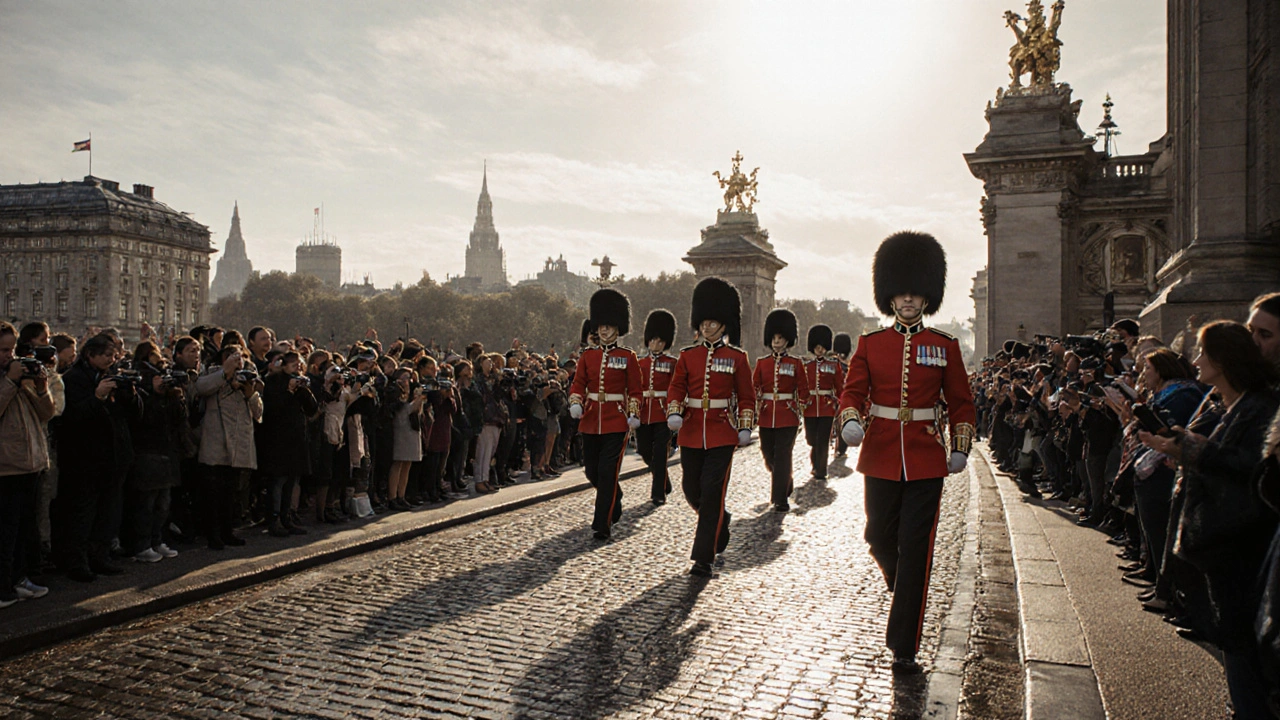Every day, thousands of people gather outside Buckingham Palace, phones ready, cameras pointed, waiting for the same thing: the Changing of the Guard. It’s not just a military routine-it’s a living piece of British history, performed with precision, pride, and a touch of theatrical flair. But if you’ve ever stood in the cold, craning your neck for an hour only to miss the moment because you didn’t know when it started, you know it’s easy to get it wrong. This isn’t just about showing up. It’s about showing up at the right time, in the right spot, with the right expectations.
When Does the Changing of the Guard Happen?
The schedule isn’t the same every day. From April to July, the ceremony happens daily at 11:00 AM. In August through March, it’s held every other day-so if you’re visiting in winter, you need to check ahead. On Sundays, it’s always at 11:00 AM, regardless of the season. The whole event lasts about 45 minutes, but the actual handover of duties takes only 15 to 20 minutes. The rest is marching, music, and ceremonial drills.
Don’t rely on apps or websites that say it’s daily year-round. The British Army updates the schedule weekly based on troop availability, weather, and royal events. If there’s a state funeral, a royal birthday, or heavy rain, the ceremony can be canceled or moved indoors. The best place to confirm? The official Royal Collection Trust website or the Buckingham Palace Twitter account (@RoyalFamily). They post updates by 6:00 AM on the day of the event.
Where to Stand for the Best View
You don’t need to be front and center to see it well-but you do need to be in the right zone. The main viewing area is along the Buckingham Palace Road, facing the palace gates. If you want to be close, arrive by 9:30 AM on busy days. The crowd starts building by 10:00 AM. The best spots are near the railings just outside the palace gates, where you can see the guards march out of the barracks and into the courtyard.
For a slightly quieter, equally good view, head to the side near the Victoria Memorial. You’ll get a full view of the marching formation and the Band of the Grenadier Guards playing traditional tunes. It’s less crowded, and you can still hear the drums clearly. Avoid standing directly under the palace windows-guards don’t salute spectators, and you’ll be blocked by security barriers.
Pro tip: If you want photos without dozens of strangers in the frame, go 10 minutes after the ceremony starts. The guards pause for a few seconds during the inspection. That’s when photographers snap their best shots-no jostling, no blurry faces.
What to Expect During the Ceremony
The ceremony begins when the relieving guard-usually from the Household Division-marches from Wellington Barracks, about a 10-minute walk away. They’re accompanied by a military band playing tunes like “Rule, Britannia!” or “God Save the King.” You’ll see red coats, bearskin hats, and polished boots. The hats alone weigh over 1.5 pounds. And yes, they wear them all day, even in 30°C heat.
The old guard stands at attention while the new guard arrives. They salute each other, exchange keys to the palace, and perform a slow, synchronized march. The music stops. You hear nothing but footsteps and the occasional cough from the crowd. Then, the old guard marches out, and the new one takes their post. The whole thing is quiet, orderly, and strangely moving.
Don’t expect fireworks or fanfare. This isn’t a show for tourists-it’s a military tradition. The guards don’t smile. They don’t wave. They don’t interact. That’s part of the point. It’s discipline. It’s history. And it’s real.

What to Bring (and What to Leave Behind)
London weather changes fast. Even in summer, mornings can be chilly and damp. Wear layers. A waterproof jacket is smarter than an umbrella-you’ll need both hands free. Bring water. There are no food vendors right at the palace gates, and the nearest café is a 10-minute walk away.
Leave the selfie sticks, tripods, and drones at home. Security won’t let you bring them in. No large bags either-there are no lockers. If you’re carrying a backpack, be ready to hold it in front of you. Pickpockets do show up in crowds. Keep your phone in a front pocket. Don’t leave your camera on a bench while you step away.
And no pets. Service animals only. This isn’t a park. It’s a royal residence with strict security.
Is It Worth It?
Yes-if you go in with the right mindset. If you’re hoping for a Hollywood-style spectacle with cheering crowds and dramatic music, you’ll be disappointed. But if you want to witness something that hasn’t changed much since Queen Victoria’s time, you’ll walk away with a quiet sense of awe.
Many tourists skip it because they think it’s overrated. But those who stay, who wait, who notice how the guards never blink, how the band plays the same tune for 200 years, how the whole thing runs like clockwork-those are the ones who come back to London just to see it again.
Other Places to See the Guard Change
If you can’t make it to Buckingham Palace-or if you want to see more-there are three other locations where the Guard changes regularly:
- Windsor Castle: Every morning at 11:00 AM, weather permitting. Less crowded, more historic. The guards march across the quadrangle with the same precision.
- Horse Guards Parade: In Whitehall, daily at 11:00 AM (April-July) and every other day in winter. You can watch the ceremony from the street and then walk into the courtyard.
- Palace of Holyroodhouse: In Edinburgh, Monday to Saturday at 11:00 AM. A great option if you’re visiting Scotland.
Each location has its own feel. Windsor is quieter. Horse Guards is more accessible. Holyroodhouse gives you the added bonus of exploring Scotland’s royal palace.

What Happens If It’s Rained Out?
Heavy rain, high winds, or extreme cold can cancel the ceremony. It’s not just about comfort-it’s about safety. Wet cobblestones are slippery. Bearskin hats can get waterlogged. Guards need to stay dry to avoid illness.
When it’s canceled, you’ll see a sign posted at the palace gates. The guards still change duties inside, but no public viewing. If you’ve traveled far, head to the Royal Mews instead. It’s open daily, and you can see the Queen’s carriages, horses, and even the royal corgis’ old kennels.
How to Make It a Full Morning
Plan your day around the ceremony. Arrive by 9:30 AM. Watch the change. Then walk through St. James’s Park to see the pelicans. Grab coffee at the café near the park exit. Then head to the National Gallery, just a 15-minute walk away. You’ll be in the heart of London’s cultural district, and you’ll have earned it.
Or, if you’re a history buff, book a ticket for the State Rooms inside Buckingham Palace. You can tour them after the ceremony. The rooms are only open in summer, but the audio guide includes stories about the guards who’ve stood outside them for generations.
Is the Changing of the Guard free to watch?
Yes, watching the ceremony from outside Buckingham Palace is completely free. You don’t need tickets. But if you want to go inside the palace to see the State Rooms, you’ll need to buy a ticket-usually around £30 for adults.
How early should I arrive for the best view?
Arrive at least 60 to 90 minutes before the start time if you want to be close to the gates. On weekends or holidays, people start lining up as early as 8:30 AM. If you’re okay with a bit of distance, 45 minutes before is enough.
Can I take photos with the guards?
You can photograph the guards from a distance, but don’t try to get close or interrupt them. They’re on duty and must remain still. Any attempt to touch them, wave at them, or block their path will get you politely but firmly asked to step back. The guards are not there for selfies.
Do the guards really not move during the ceremony?
They’re trained to stand perfectly still for hours. During the ceremony, they march in sync and hold poses for minutes at a time. One guard once stood motionless for 47 minutes in 35°C heat without blinking. That’s the level of discipline involved. Don’t expect them to react to your jokes or gestures.
What’s the difference between the Changing of the Guard and the Queen’s Guard?
The Queen’s Guard is the group of soldiers stationed at the palace at any given time. The Changing of the Guard is the ceremony where one group replaces another. So the Queen’s Guard is always there. The Changing of the Guard happens a few times a week. You’re watching the handover, not just the guards on duty.
Final Tip: Respect the Tradition
This isn’t a theme park ride. It’s a ceremony that’s been performed since the 1600s. The soldiers are real, the uniforms are real, the history is real. They’re not there to entertain you. They’re there to protect. So when you stand there, quiet and still, you’re not just watching a show-you’re honoring a legacy. And that’s why, even after seeing it ten times, people still come back.
